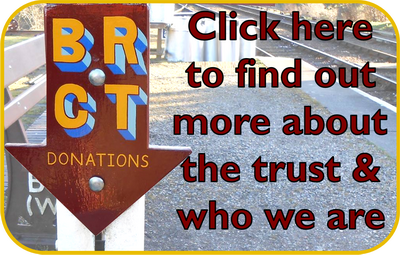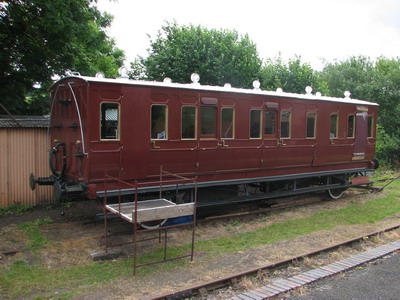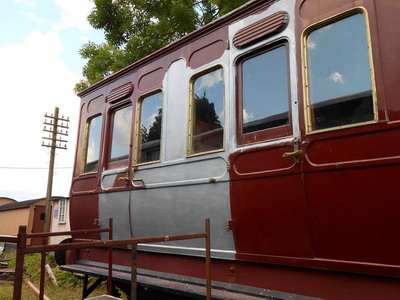
Our ProjectThe Barry Railway Carriage Trust was formed in 2009 to complete the restoration of Barry Railway Company carriage 163 for use on the Severn Valley Railway. The coach was brought preserved in 1992 having been used as a holiday home in the Clent Hills with sister vehicle 164. Since arrival the roof and bodywork have been repaired, doors repaired or replaced, partitions between the compartments re-instated and it has been mounted onto a replacement underframe. This was adapted for use under the vehicle and is a four wheeled rather than the six wheeled originally fitted. We are aiming to get Barry Railway carriage 163 into traffic.To achieve this we expect to need to raise at least 25,000. Early Days163 arrived at Hampton Loade along with some parts of sister 164 in 1992. All the useful parts from 164 were stored for spares or as patterns. Historical research occupied the early years, in order to ascertain what materials and fittings were used in the construction and maintenance of the coach. Broken windows were replaced and the vehicle made watertight. All doors were made to open which was a time consuming task some had not been used for 60 years! All doors were repaired - including one with 95% new material by volunteer carpenter Andy Clarke. Restoration ProgressionA 1937 built four wheeled steel underframe from an ex Southern Railway Van C was acquired from the Gwili Railway.
It arrived at Hampton Loade on 24/2/2001 and prepared for taking the body in a relatively short time but then had to wait until 16/8/2003 before the body and underframe were eventually united, thanks to the volunteers of the SVR Bridgnorth crane crew. The coach is stabled on a truncated siding prepared for the purpose and since the uniting of body and underframe work has included the fitting of vacuum brake gear. ConsolidationBy 2008 work had slowed in 163. Problems with the roof canvas were resulting in water damage to the internal restoration already carried out and volunteer numbers were low. Dave Flavell, project coordinator of the Barry Coach Fund enlisted the help of others to form the Barry Railway Carriage Trust in 2009. The newly formed trust took on custodianship of Great Western Railway tool van 66 owned by the GWR 813 Preservation Fund for use as a sales shop at Hampton Loade, and set about making the vehicle watertight. Progress since formation of the trustSince 2009 we have been working to put in place organisational measures to facilitate the completion of 163. This has included appointing trustees, holding an AGM and maintaining proper accounts. We considerably refurbished the interior of van 66 and completely replaced its external planking on both sides and one end. What we achieved in 2015In 2015 we gave ourselves an ambitious target of what we wanted to achieve - a great deal of progress was made with 163 including:
Before the new canvas could be fixed all the fixtures and fittings had to be removed off the roof. We have also taken the opportunity to re-profile the side gutters. These were to the original profile but were a weak point of the design in that they weren t deep enough and allowed water to run down the side of the coach rather that take it away to the ends, damaging the paintwork. What we achieved in 2016
Our PlansWhat Remains to be done?Internally we have the compartments to be finished fitting out. Some of the materials for this are to hand and others have yet to be purchased.
The majority of the lincrusta has to be applied in the compartments plus Scotia to be fitted and gold leaf applied. The woodwork will require re-varnishing. The internal lighting requires wiring and ventilators need fitting (they are on order). The FutureOnce carriage 163 is restored, we intend to operate it on the Railway. . When not in use the coach can be kept undercover in the carriage shed at . 163 could also be hired out to other railways to run with appropriate four or six wheeled coaches, such as those on the Gwili Railway. |














|
|
If you would like to help us reach our goal, there are many ways you can do so. Please visit our How to Help page. |
